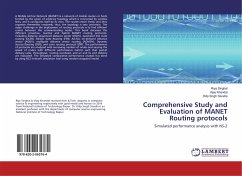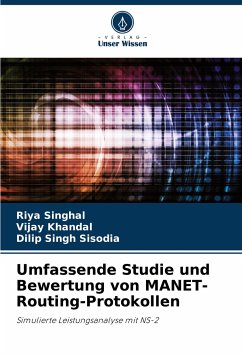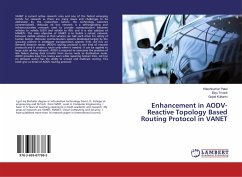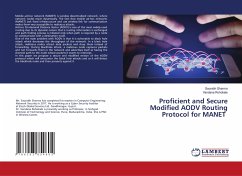
Comprehensive Study and Evaluation of MANET Routing protocols
Simulated performance analysis with NS-2
Versandkostenfrei!
Versandfertig in 6-10 Tagen
33,99 €
inkl. MwSt.

PAYBACK Punkte
17 °P sammeln!
A Mobile Ad hoc Network (MANET) is a network of mobile routers or hosts formed by the union of arbitrary topology which is connected by wireless links, and it configures itself by its own. The routers move freely, and they organize themselves randomly; thus, the topology is very uncertain. The major challenge in the deployment of routing protocols is to find efficient routes between the communicating nodes. This book discusses the different proactive, reactive and hybrid MANET routing protocols. Including distance sequenced distance vector (DSDV), optimized link state routing (OLSR), fisheye s...
A Mobile Ad hoc Network (MANET) is a network of mobile routers or hosts formed by the union of arbitrary topology which is connected by wireless links, and it configures itself by its own. The routers move freely, and they organize themselves randomly; thus, the topology is very uncertain. The major challenge in the deployment of routing protocols is to find efficient routes between the communicating nodes. This book discusses the different proactive, reactive and hybrid MANET routing protocols. Including distance sequenced distance vector (DSDV), optimized link state routing (OLSR), fisheye state Routing (FSR), Ad-hoc on-demand distance vector (AODV), multipath distance vector routing (AOMDV), Dynamic Source Routing (DSR), and zone routing protocol (ZRP). The performances of protocols are analyzed with increasing number of nodes and varying the speed of nodes with different performance metrics such that packet delivery ratio, throughput, routing overhead, and an end to end delivery are evaluated. The simulated comparative performance analysis has done by using NS2 network simulation tool using random waypoint model.












